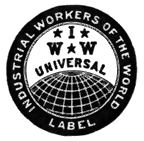Distribution of Capital and the Pull Economy
Michel Bauwens at P2P blog quotes from David Winer's prescription for fixing the venture capital industry:
He also cites a post by Doc Searls on his vision for an economy in which the "pipeline" and "'value chain' from producer to consumer" no longer exist, but are replaced by a system in which the users are the owners, the main source of venture capital.
As I understand it, this means that capital is pooled by consumers and production is organized by networks of consumers. Heady stuff.
In a related post, he writes of the transition from the "Push Economy" to the "Pull Economy":
Here, in yet another post, is a quote from David Bollier explaining the concept in more detail:
Here's an excerpt from Bollier's report, "When Push Comes to Pull," for the Aspen Institute's Communications and Society Program:
The old Push Economy apparently corresponds to J.K. Galbraith's "technostructure," and to William Lazonick's model of capital-intensive, high fixed-cost, high-throughput production. Those two authors argue that high capital outlays and long leadtimes are inherent in efficient modern production, and require long-term predictability and guaranteed markets. But the reality is just the opposite: Galbraith's "technostructure," with its need for predictability and control, guaranteed demand, and suppression of market fluctuations, is actually the result of artificially large size and capital-intensiveness. The state promotes centralization and over-accumulation; and given the high fixed costs of such hypertrophied enterprises, they must find a way to ensure the consumption whatever these privately-owned planned economies decide to produce. They are only "efficient" given an artificial set of starting assumptions; in other words, they are a classic example of Drucker's "doing efficiently what should not be done at all."
The opposite model is a decentralized economy of small enterprises responding effectively to consumer demand. As Barry Stein argued (in Size, Efficiency, and Community Enterprise):
In other words, the Pull Economy.
One word: disintermediate. Take out the middleman. We don’t need the partners, limited or general, they gum up the works. We need money to start new ventures. Luckily we know the people with the money, they’re the users. And we need people to validate the ideas. Same people, the users.
He also cites a post by Doc Searls on his vision for an economy in which the "pipeline" and "'value chain' from producer to consumer" no longer exist, but are replaced by a system in which the users are the owners, the main source of venture capital.
As I understand it, this means that capital is pooled by consumers and production is organized by networks of consumers. Heady stuff.
In a related post, he writes of the transition from the "Push Economy" to the "Pull Economy":
That is, communications and activities have moved from a hierarchical center-out structure to a network-based decentralized architecture where the focus is on the end user rather than the producer.
Here, in yet another post, is a quote from David Bollier explaining the concept in more detail:
Briefly put, a “push economy” – the familiar industry model of mass production – is based on anticipating consumer demand and then making sure that needed resources are brought together at the right place, at the right time, for the right people. A company in the “push” model forecasts demand, specifies in advance the necessary inputs, regiments production procedures, and then pushes the final product into the marketplace and the culture, using standardized distribution channels and marketing.
By contrast, a “pull economy” – the kind that appears to be materializing in online environments – is based on open, flexible production platforms that use networking technologies to orchestrate a broad range of resources. Instead of producing standardized products for mass markets, companies use pull techniques to assemble products in customized ways to serve local or specialized needs, usually in a rapid or on-the-fly process.
Instead of companies pushing their products at us (in pursuit of their own strategic or competitive advantages), the networked environment radically empowers individuals, and communities of like-minded individuals, to pull the products and services that they want, on their own terms and time requirements. For example, small groups of people with unusual niche interests – say, extreme skateboarders or opera buffs – can now aggregate their consumer demand and successfully induce businesses to serve their specialized interests. In the process, many corporations are having to radically re-organize themselves in order to serve the emerging “pull” market demand.
What’s really interesting to those of us interested in the commons is how the Internet now enables small groups of people to easily constitute themselves as an online commons. In so doing, they can often get what they want through social sharing and collaboration, without even using the market! This is because a community based on norms of trust and reciprocity can be tremendously more efficient than markets, which tend to have huge fixed overhead costs (bureaucracies, advertising, distribution systems, lawyers to fight piracy, etc.). As John Seely Brown, the former director of Xerox PARC, put it, “The collaborative peer production achieved through pull platforms can be radically more efficient than classically structured corporations.”
A handful of companies have established themselves as “pull platforms” – think eBay, Yahoo, Google and Amazon. But there are also manufacturing enterprises such as Cisco, the tech company, and Li & Fung, an apparel manufacturer, that are also using “pull” techniques to compete more successfully. “Pull” companies are structured to draw upon a vast global network of suppliers who can meet customized needs rapidly. This works because pull platforms are modular and loosely coupled.
Here's an excerpt from Bollier's report, "When Push Comes to Pull," for the Aspen Institute's Communications and Society Program:
A company can substitute any specialized function with another, more appropriate module with relative ease, as needed. Instead of having the entire corporation build around a rigid, standardized protocol, the interfaces among modules and the protocols for connecting them are standardized. “This means that anybody who wants access to these resources can figure out what they are and how to connect them,” said John Hagel, a noted management consultant and co-author of The Only Sustainable Edge.
With modularity and loose coupling of functions, it therefore becomes easier to have frequent and rapid enhancements of the production platform. “The idea is that these platforms are not defined in advance,” said Hagel. “They are emerging over time as a result of the actions of the participants, in rapid and frequent enhancements.”
This points to another design premise of pull platforms: that more and more participants will join the process over time, adding greater value in the process. This enables companies to easily incorporate new supply and distribution participants, and to rapidly scale in size as market conditions or customer demand changes.
Pull platforms have a subtle but powerful advantage over push systems in their ability to leverage people’s enthusiasm and motivation. As Hagel and Brown have written, “Pull platforms harness the passion, commitment and desire to learn of their participants, thereby enabling the formation and functioning of distributed communities that can rapidly improvise and innovate.” Pull platforms tend to be able to mobilize and deploy social energies more effectively than bureaucratic, standardized push platforms.
The old Push Economy apparently corresponds to J.K. Galbraith's "technostructure," and to William Lazonick's model of capital-intensive, high fixed-cost, high-throughput production. Those two authors argue that high capital outlays and long leadtimes are inherent in efficient modern production, and require long-term predictability and guaranteed markets. But the reality is just the opposite: Galbraith's "technostructure," with its need for predictability and control, guaranteed demand, and suppression of market fluctuations, is actually the result of artificially large size and capital-intensiveness. The state promotes centralization and over-accumulation; and given the high fixed costs of such hypertrophied enterprises, they must find a way to ensure the consumption whatever these privately-owned planned economies decide to produce. They are only "efficient" given an artificial set of starting assumptions; in other words, they are a classic example of Drucker's "doing efficiently what should not be done at all."
The opposite model is a decentralized economy of small enterprises responding effectively to consumer demand. As Barry Stein argued (in Size, Efficiency, and Community Enterprise):
Clearly, if firms could respond to local conditions, they would not need to control them. If they must control markets, then it is a reflection of their lack of ability to be adequately responsive. But ultimately, this question hinges on the other aspect of Galbraith's thesis; namely, that without the present large scale and control, important goods will simply not be able to be produced....
....[I]t can be shown easily in information theory that the feedback--information linking the environment and the organization attempting to service that environment--necessarily becomes less accurate or less complete as the rate of change of the data increases, or as the number of steps in the information transfer process increases....
Rather than top-down control to accommodate large size, the solution is to integrate the organization more closely with the environment it serves.
This problem is to be solved not by the hope of better planning on a large scale..., but by the better integration of production enterprises with the elements of society needing that production.
Under conditions of rapid change in an affluent and complex society, the only means available for meeting differentiated and fluid needs is an array of producing units small enough to be in close contact with their customers, flexible enough to produce for their demands, and able to do so in a relatively short time.... It is a contradiction in terms to speak of the necessity for units large enough to control their environment, but producing products which in fact no one may want.
In other words, the Pull Economy.









3 Comments:
Thank YOU!!
"Fucking awesome" is right!
Can't add much to that...
Wait. maybe I can.
Cosmic! Orgasmic!!
On an exceedingly light note, my wife is fixing up the morning victuals and she's cracked 3 eggs...all of them double yolked! I have to wonder what the Amish farmers we bought them from are doing with their free range hens. ;)
Mandatory related link: The Long Tail.
Good post, BTW.
Post a Comment
<< Home